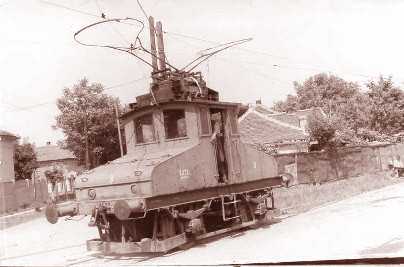
The locomotive nr. 3
[index] [loc #4] [loc #5] [map] [the end] [in 2003]

The construction plate was drawn based on the photo about the construction plate of the eloc nr. 37 (photo: Wolfgang D. Richter, more information http://www.rail.lu/katharinahuette.html)
The locomotive was built in the Katharinenhütte factory in Rohrbach/Pfalz in 1905 with number 33 for Bingen Nebenbahnen. The electric parts were built by Siemens with number SSW 238. On the Bingen Nebenbahnen the locomotive had the number 12. During the 1st World War or after it the eloc was confiscated or sold to Oradea (Nagyvárad). Here it has got the number 3. The next picture shows the locomotive at Bingen.
Source: Privatbahnen in Deutschland Band 1 Rheinlandpfalz (Ek Verlag). The picture and the information are from Jens Merte and Fullin Giovanni.
The blow up of the construction plate based on this picture confirms that the Bingen nr. 12 and the Oradea nr. 3 are identical.
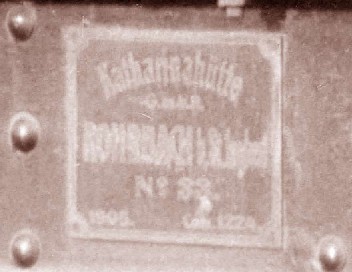
The picture has from Frank Christopher sent by Wolfgang D. Richter.
At Katharinenhütte was built the L.A.G. 1 with number 29, the first single-phase AC electric locomotive in Germany in 1905.
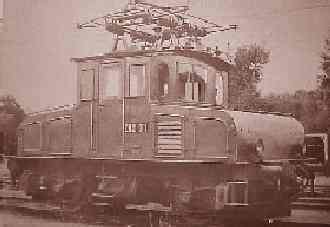
Source: http://www.worldrailfans.org/Germany/E69.shtml
For information about elocs built at Katharinenhütte and similar locomotives see also the ALACF site of Jean-Marie Ottele at: http://www.rail.lu/katharinahuette.html
| Weight | 17 T |
| Power | 25 H.P.(?) |
| Number of motors | 2 |
| Number of pantographs | 2 |
| Number of axles | 2 |
| Voltage | 600 V |
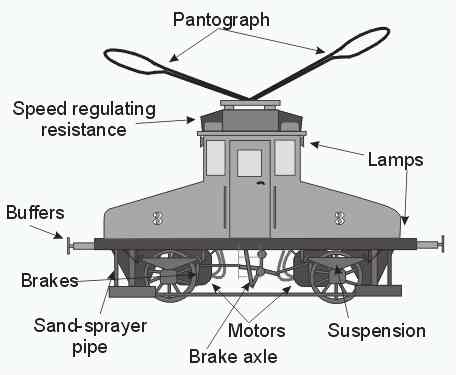
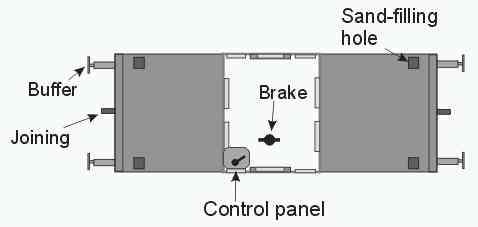
(source: Wolfgang D. Richter)
A picture about the remained parts of the rheostat switch. It can be observed the contacts which had the role to switch on and off resistances placed on the roof of the locomotive.
In the 70's the loc had three lamps on each side, one on the roof and two on the nose. These lamps were changed in the early 80's and the lamp on the roof was removed. The state from the 70's can be observed on the picture below taken in 1978.
In the late 80's the speed regulating resistance boxes on the roof were changed into boxes taken from old trams.
It's possible that this locomotive was bought in 1925 from other place but I have no information about the origin.
This locomotive had less power then the other two. After the shortening of the line it wasn't necessary to use three locomotives. In the early 80's the loc nr. 5 was used frequently and the other two were used only to help this or when the loc nr. 5 was under repair. From the middle of the 80's the loc nr. 5 broke down frequently and the loc nr. 3 was used often. In the 90's it was used more time in pair with the loc nr. 4. In 1994 the line was winded up and the locomotive was taken to the backyard of the new depot.